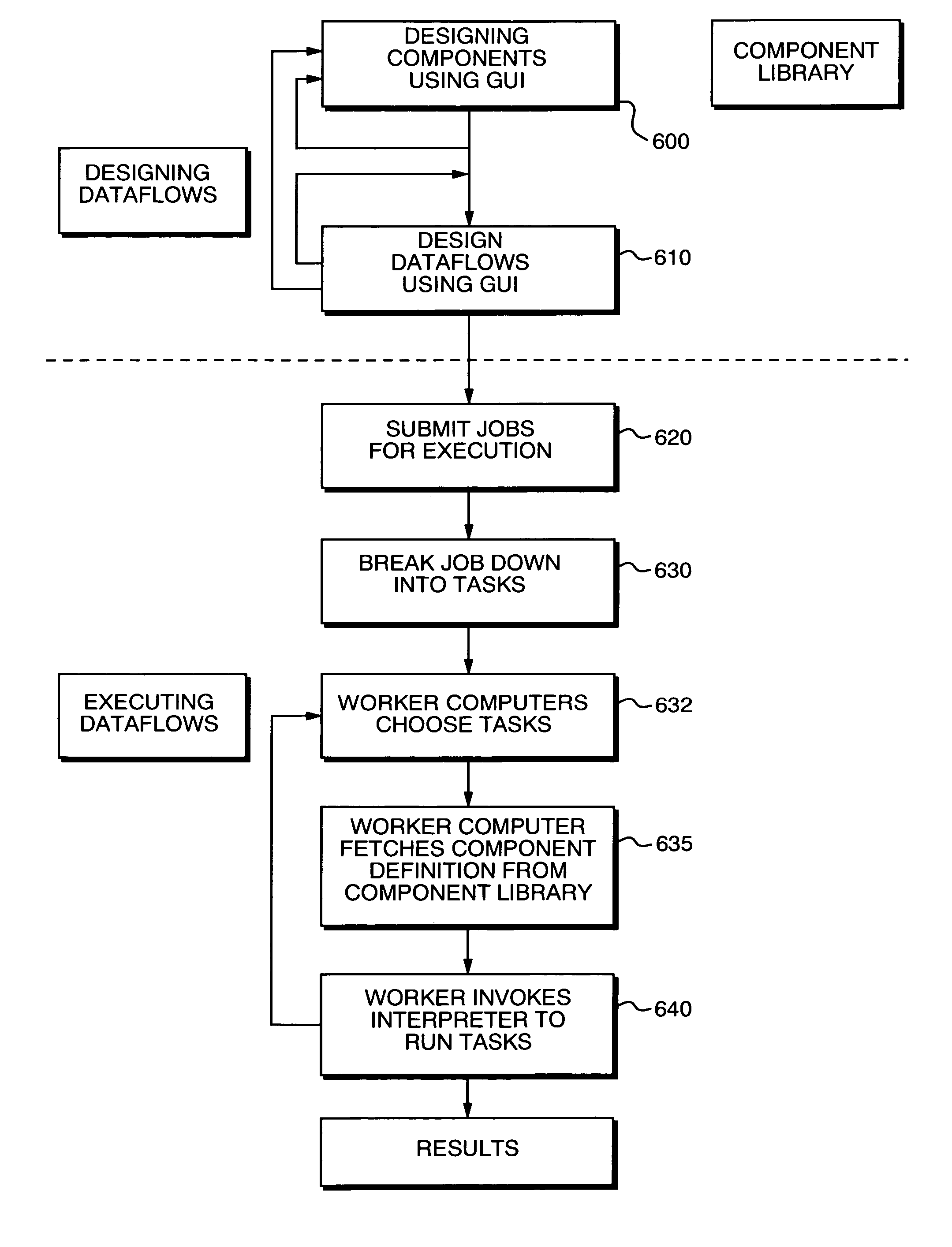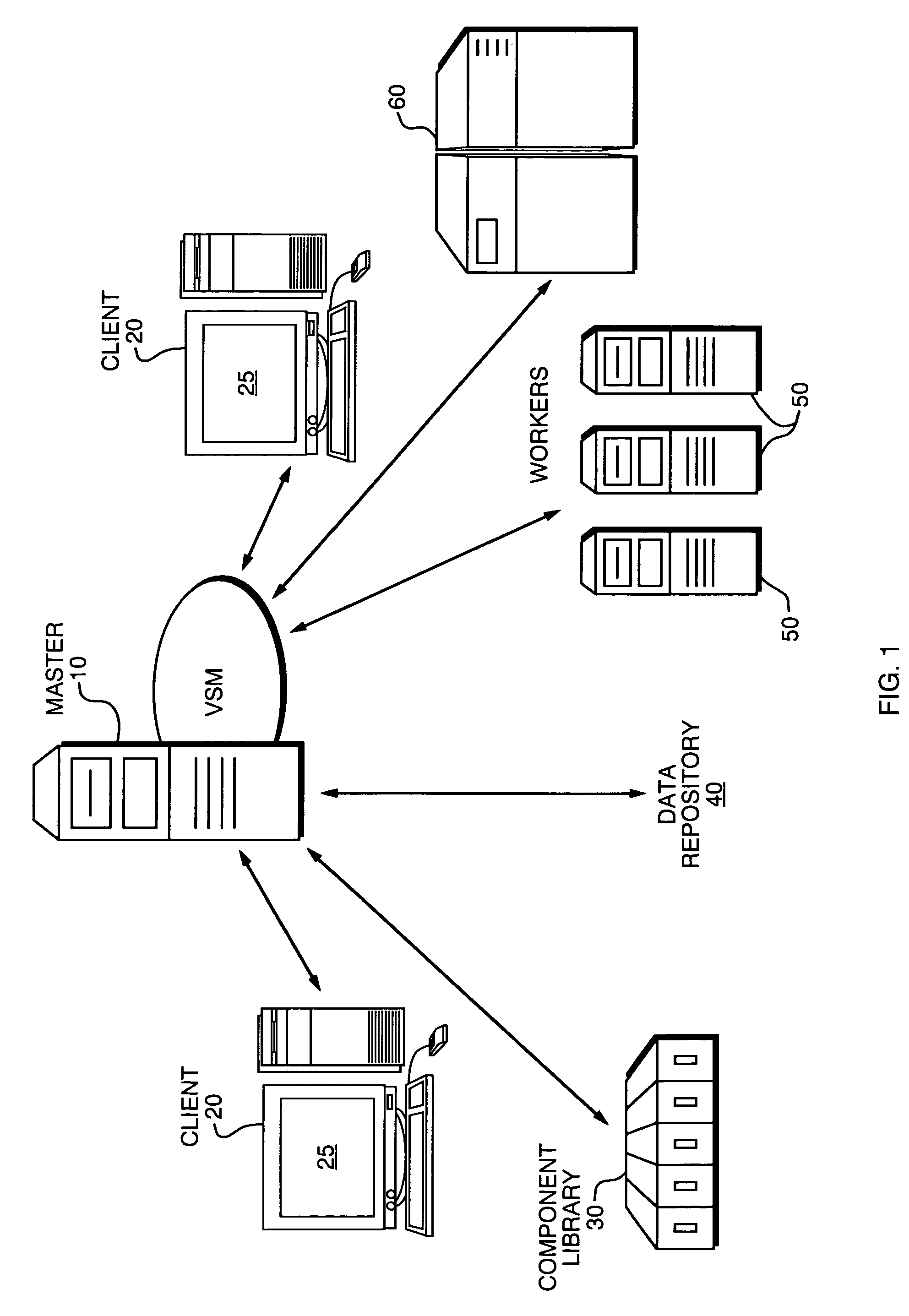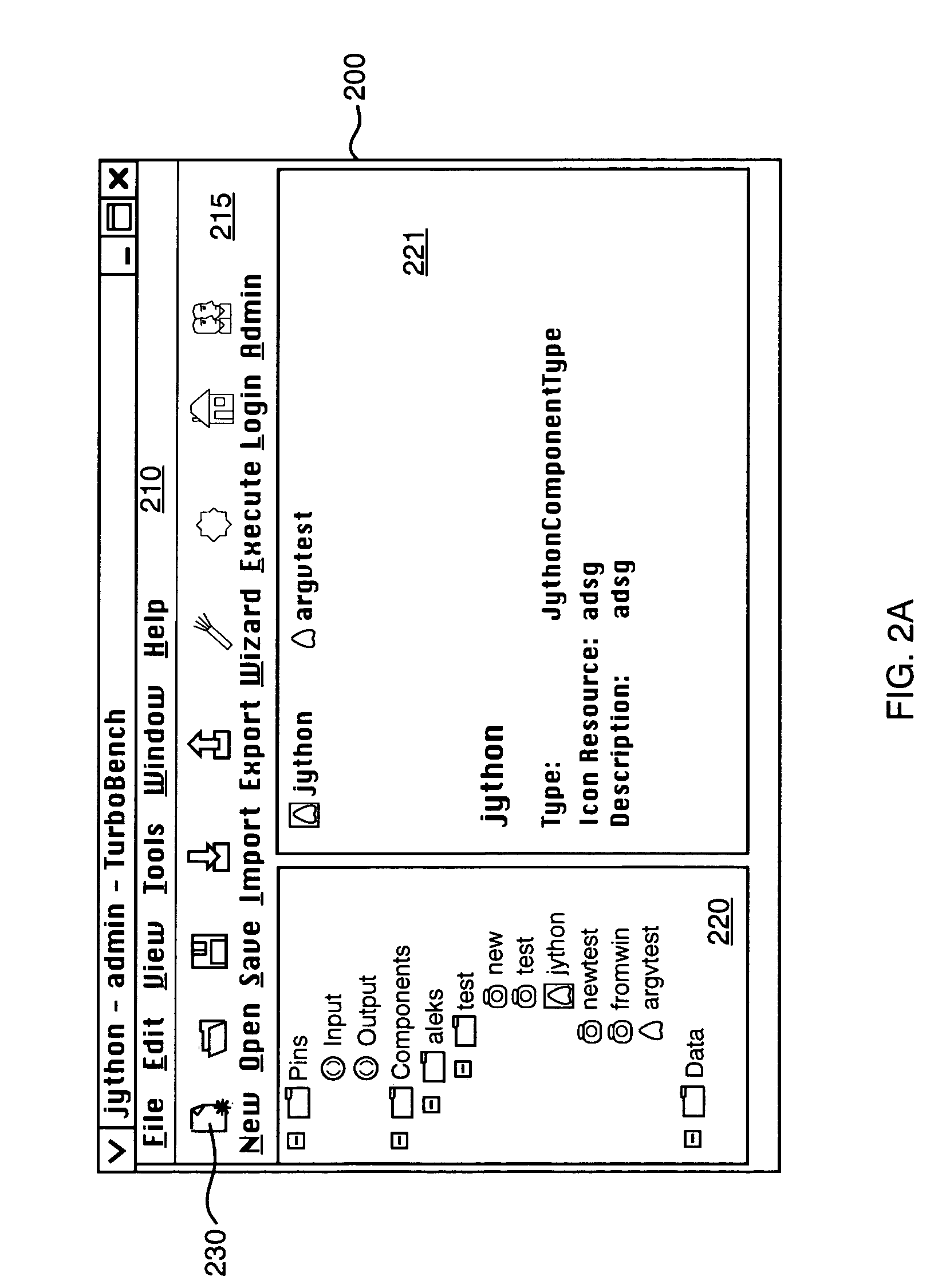Method and apparatus for dataflow creation and execution
a dataflow and data technology, applied in the field of methods and systems, can solve the problems of complex problems, new business-critical technical computing problems, and the individual computational steps themselves are often computer intensive and time-consuming
- Summary
- Abstract
- Description
- Claims
- Application Information
AI Technical Summary
Benefits of technology
Problems solved by technology
Method used
Image
Examples
example 1
[0064]The following provides a detailed example applying the method of the present invention to a dataflow for a protein sequence classification. An important problem for many bioinformatics researchers is the classification of groups of amino-acid sequences into fine-grained categories (subfamilies) whose members have similar physical properties and may be metabolically related. For example, each of the sequences involved might be what is known as a structural domain of some protein in a certain protein family, and the goal might be to identify which of the sequences are likely to have similar function. For a typical problem, there may be tens of thousands of sequences involving millions of amino acids.
[0065]A number of approaches to this sequence classification problem are possible, but the one considered here creates the subfamilies by identifying “seed pairs” (highly similar pairs of sequences) and collecting other sequences around each seed pair based on a model of the nature o...
PUM
 Login to View More
Login to View More Abstract
Description
Claims
Application Information
 Login to View More
Login to View More - R&D
- Intellectual Property
- Life Sciences
- Materials
- Tech Scout
- Unparalleled Data Quality
- Higher Quality Content
- 60% Fewer Hallucinations
Browse by: Latest US Patents, China's latest patents, Technical Efficacy Thesaurus, Application Domain, Technology Topic, Popular Technical Reports.
© 2025 PatSnap. All rights reserved.Legal|Privacy policy|Modern Slavery Act Transparency Statement|Sitemap|About US| Contact US: help@patsnap.com



